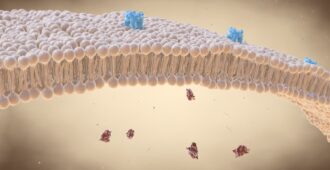“The annals of ALS clinical trials is strewn with failed studies. Only two out of more than 70 clinical trials have been positive, and even these showed only very modest benefit. Is this dismal record strictly due to the extraordinary complexity of neurodegenerative disease in general, and ALS in particular? Or is it due to methodological flaws that could be repaired?”
Robert G Miller, Professor of Neurology, Stanford University
Although there is not much we can do about disease complexity, improving the way treatments are trialed is something that can be achieved. Imagine a world without clinical trials, where independent companies or individuals would be allowed to sell their self-made ‘drugs’ without any evidence that they were ever used on anyone with the disease, let alone that they would improve one’s condition. No one would know what the drug is (which could simply be a water solution), how it works and whether as soon as the drug is taken, we would be poisoned.
Thankfully, this is not the case and clinical trials, although not perfect, are considered the gold standard for approving any treatment. However, there are still some improvements that can be done to make trials easier to access and provide more accurate estimates of drugs’ effectiveness much faster.
At the recent International Symposium on ALS/MND in Glasgow, there was a lot of focus on clinical trials – how to design them to improve their efficiency, how best to interpret the obtained data, and, most importantly, how to make them accessible to more people. To put everyone in the right mindset, the opening keynote speech, delivered by Prof Hiroshi Mitsumoto, introduced the final version of the revised guidelines on MND clinical trials, replacing the previous, 1999 version.
The ‘Airlie House’ guidelines were formed by tens of MND clinicians, researchers and statisticians from across the world, who initially met for a workshop at the Airlie House in Virginia, USA, to discuss any necessary changes that should be considered when it comes to organizing MND clinical trials. After a number of rounds of comments from the members and the public, the final consensus was published in March 2019 in the journal Neurology.
One of the members, Dr Catherine Lomen-Hoerth, commented on the development of the guidelines “We had an intensive 3-day in person meeting involving international researchers, clinicians, industry partners, and patient advocates to hash out the specifics of our recommendations. We then worked carefully through the Delphi consensus process to make sure all voices were heard, consensus reached, and the document modified accordingly.”
Why do we need clinical trial guidelines?
Undoubtedly, this was an extensive amount of work for everyone involved, and so it is only fair to ask – why do we need these and why are they important? Dr Johnathan Cooper-Knock, one of the Airlie House members explains:

“Clinical trials are essential – they are the only tool we have to determine which potential therapies are truly effective for MND patients. A drug can work great in theory and fail to help patients or may look speculative in theory and be great for patients.
“Too often clinical trials are wasted because of bad design – it is impossible to get an answer if you don’t ask the question properly. The new Airlie House guidelines set out to stop this happening by giving the state-of-the-art view on how best to perform a clinical trial in MND.”
The hope is that these guidelines will provide a unified way of conducting MND clinical trials to improve access to treatments sooner and faster. Split into nine different sections, it aims to encompass the variety of aspects of clinical trial design.
Below, we have summarised how each of these sections was addressed in the guidelines and the impact it will have on clinical trials. You can skip to a specific section by clicking on the topic below:
- Section 1: Preclinical studies
- Section 2: Biological and phenotypic heterogeneity
- Section 3: Outcome measures
- Section 4: Disease modifying and symptomatic interventions
- Section 5: Recruitment and retention
- Section 6: Biomarkers
- Section 7: Clinical trial phases
- Section 8: Beyond traditional trial designs
- Section 9: Statistical considerations
Section 1: Preclinical studies
Before a drug enters a clinical trial, the investigators need to be sure that the mechanism by which the drug is believed to work is viable (other than theoretical assumptions). The most efficient way to show this is by first treating MND models, such as animals with engineered or naturally-occurring MND, or cell models including the increasingly popular induced pluripotent stem cell technique, where skin cells of a patient are transformed into other cells, such as motor neurons.
The preclinical studies guidelines advised that:
- as each type of the disease model has its own strengths and weaknesses, researchers are encouraged to use the one(s) that is most appropriate for the purposes of their study aim.
- animal models should aim to be closely matched on the disease specifications, such as specific symptom progression (including motor and cognitive function) or nature of the disease.
- preclinical studies should mainly assess the drug’s effectiveness, safety, toxicity, where in the body the drug has an effect and the amount necessary to show an effect.
Section 2: Biological and phenotypic heterogeneity
This topic explores the issue of who to recruit (and not recruit) to clinical trials, and what can be done to make recruitment more accessible. Due to the differences seen in people with MND (such as rate of progression, presence of genetic mistakes*, type of MND, or cognitive and behavioural changes), clinical trials face the potential issue of either having too strict criteria with higher trial retention, or including participants regardless of their disease characteristics, requiring greater control over the different groups.

Dr Catherine Lomen-Hoerth, Professor of Clinical Neurology and ALS Center Director at University of California San Francisco, who was one of the members of the Section 2 panel, highlighted: “Key take-home points for this section include the importance of appreciating the diversity of ALS and the need for stratification of patients in clinical trials in case of differential treatment effects, the need to enrol more rapidly progressive patients in clinical trials in order to see potential treatment effects over the time course of the trial, and lastly the importance of collecting DNA from every patient enrolled in a clinical trial to inform future clinical trials.”
Section 3: Outcome measures
Outcome measures are important to know whether there is a progression in one’s disease and where does this effect manifest. This includes the use of functional rating scales, survival, cognitive and pulmonary function, motor neurone activity and other techniques in clinical trials.
A member of the Session 3 panel, Dr Johnathan Cooper-Knock, commented: “We sought to give flexibility to avoid missing drugs which could be beneficial but perhaps treat only a specific MND symptom. However, we also underlined the importance of measures of survival and muscle function which are the ultimate target of a cure for MND.”
The key guidelines suggested that:
- due to the primary goal to prolong life and improve function in people with MND, all Phase 3 clinical trials should include the measure of survival or functional assessment as their main outcome.
- clinical trials should use measures of pulmonary function as an outcome, as respiratory function is associated with survival, cognition and quality of life.
- as clinical trials are often across multiple sites, all examiners involved in the trial should be trained to make sure all measures are completed in a uniform way across sites.
Section 4: Disease modifying and symptomatic interventions
Due to the lack of life-prolonging treatments, people with MND often rely on symptom management such as the use of breathing support (non-invasive ventilation; NIV), altered nutrition, or intake of supplements. Controlled management of these factors may alter the disease course, including survival and quality of life. Any such positive effects are great news; however, they could impact on the trial measurements as any benefits might be mistakenly contributed to the trialed drug.
 Section 4 member Professor Christopher McDermott, Consultant Neurologist at the University of Sheffield summarised the agreed guidelines: “The section 4 guidelines should mean that trials are more inclusive in that patients who have NIV and PEG tubes will not be automatically prevented from taking part in studies unless there is a specific reason. Additionally, the guidelines emphasise that all treatments for people living with MND should be rigorously tested. This should mean that in the future all aspects of care are backed by the best evidence.”
Section 4 member Professor Christopher McDermott, Consultant Neurologist at the University of Sheffield summarised the agreed guidelines: “The section 4 guidelines should mean that trials are more inclusive in that patients who have NIV and PEG tubes will not be automatically prevented from taking part in studies unless there is a specific reason. Additionally, the guidelines emphasise that all treatments for people living with MND should be rigorously tested. This should mean that in the future all aspects of care are backed by the best evidence.”
Section 5: Recruitment and retention
One of the crucial components of a clinical trial are volunteers – that is, people with MND willing to undergo an experimental therapy even though the effects are not fully understood and the possibility of receiving placebo. A large number of people dropping out of trials might cause a problem in a number of ways, including interpreting the outcomes of the trial from what becomes ‘missing data points’. Therefore, their participation and attainment is important in order to see whether the tested drug has an effect. The aim is to make each trial fair to the participant and offer support to both them and their family.
In general, the guidelines suggested close collaboration with people with MND and their carers on certain aspects of the trial, including development of trial materials and tests, which might often be overwhelming and difficult to understand, and development and clear communication of expense policy to ensure that participants know they will be reimbursed any out-of-pocket expenses. Clinical trial investigators are also advised to use other educational sources to help potential participants to understand details of the trial which is often difficult to understand, and assure that participants and their family are provided with a final report of the study after their participation.
Section 6: Biomarkers
 “The inability to measure disease activity in an objective, accurate and individualised way in MND is the single greatest barrier to successful therapy development. So-called biomarkers have three key roles: (1) to speed up trial enrolment through earlier and more inclusive diagnosis; (2) to categorise individuals more accurately according to the level of activity of their MND; and (3) to provide a fast and reliable readout of disease activity to more rapidly assess whether a candidate drug is having a beneficial effect or not.”, explains Professor Martin Turner, Professor of Clinical Neurology and Neuroscience at the University of Oxford, who was one of the leaders of the Section 6 guidelines.
“The inability to measure disease activity in an objective, accurate and individualised way in MND is the single greatest barrier to successful therapy development. So-called biomarkers have three key roles: (1) to speed up trial enrolment through earlier and more inclusive diagnosis; (2) to categorise individuals more accurately according to the level of activity of their MND; and (3) to provide a fast and reliable readout of disease activity to more rapidly assess whether a candidate drug is having a beneficial effect or not.”, explains Professor Martin Turner, Professor of Clinical Neurology and Neuroscience at the University of Oxford, who was one of the leaders of the Section 6 guidelines.
“We carefully defined the different biomarker needs in MND and key standards to be met for each. I came to the meeting with a very strong view in my mind that there must be ‘no more failed drug trials in MND’. This was not naivety. There will unfortunately still be future trials where the drugs don’t work. My aim however was to seek agreement that we as a global research community would never again accept a trial where we couldn’t work out why a drug had not worked due to a lack of biomarker data built in to the study design.
“I am pleased that my international colleagues agreed, and I think these guidelines mark a significant step forward in improving the chances of more effective therapy development and eventually a world free of MND.”
The guidelines agreed that investigators should aim for testing candidate biomarkers as part of clinical trials and any biomarkers in development should demonstrate changes corresponding to disease progression. Once developed and validated, biomarkers should be used to identify patients most likely to benefit from a treatment and to confirm the biological effect of the drug (such as affecting the intended site of treatment).
Section 7: Clinical Trial Phases
The design of a traditional clinical trial follows three to four consecutive phases, each focusing on a specific outcome. Over the years however, investigators found that developing and running alternative clinical trial designs might be more efficient and provide findings of effectiveness in a shorter time and potentially, at a lower cost.

Dr Rubika Balendra, Clinical Research Fellow at University College London, a member of the Section 7 sub-committee summarises her highlights: “The new guidelines form an excellent foundation for increasing successes in drug discovery in MND research, which will ultimately have a major impact on people living with the disease. For a plethora of reasons, many Phase 3 trials have failed in the past. These guidelines for Phase 2 studies specify having, as far as possible, robust data on safety, tolerability, pharmacodynamics [(i.e. the mechanism by which a drug works]) and target engagement, before moving forwards into large, costly Phase 3 studies.
“In conjunction with the rest of the new guidelines, this approach will lead the therapeutic agents with the greatest likelihood of success going into Phase 3, giving patients the hope of effective treatments for this disease. These guidelines also promote the use of novel biomarkers and algorithms as efficacy markers, which will drive research into these important areas forwards.”
One of the guidelines also noted that investigators should aim to publish results of their clinical trials even where the results are negative, to make them available to the MND community.
Section 8: Beyond Traditional Trial Designs
This section explored the possible pitfalls of negative trials since the approval of riluzole (and, most recently, edaravone in some countries) and suggested Phase 3 trials should be re-evaluated. Specifically, they highlighted lack of focus on delivering the drug to the target area of the central nervous system, possible interactions of the trial drug with riluzole, lack of effective outcome measures and lack of patient stratification. Focusing on improving these aspects should make clinical trials more efficient.
A new design of trials called ‘pragmatic trials’ was also suggested to be used by investigators in future clinical trials. Pragmatic trials test a treatment in real-life settings, as part of routine clinical practice, as opposed to the more conventional ‘explanatory trials’, which require a controlled environment allowing to explore if and how a drug works compared to a placebo or another drug, without as few intervening factors as possible. The guidelines prompted investigators to try to utilise pragmatic trial design to compare established therapies and determine how a Phase 3 treatment works ‘in real life’.
Section 9: Statistical considerations
These guidelines provide researchers with statistical and methodological guidance covering all phases of clinical research, such as running exploratory trials, use of historical controls, developing biomarkers, patient stratification, lead-in period of trials, group sequential designs (allowing early termination of a trial), participant dropouts, and combined analysis of survival and progression. For full guidelines on statistical considerations, see Appendix 5 of the Airlie House Guidelines.
The future of clinical trials
It is great to see that this substantial amount of work has been done to assure clinical trials are performed in the most efficient way, regardless of where and by whom. Professor Robert Miller, who is one of the authors of the guidelines, summarises his view on the current state of MND clinical trials and the importance of the current guidelines:

“More sophisticated methods of statistically modelling the prognosis of individual patients may provide a path forward in reducing the heterogeneity of our trial populations, and even provide virtual controls instead of so many patients taking placebo.
“We all recognize the value of biomarkers for clinical trials to tell us when we are engaging the target. Finally, we are beginning to make headway in biomarker development, and we need to make this a very high priority.
“This long overdue revision of the 1999 Guidelines for clinical trials incorporates these and many other important new developments. Bias was reduced and scientific rigor was enhanced with the use of evidence-based methods. These Guidelines are a dynamic living document which will need regular revision to keep them relevant.”
- Find the full guidelines and guidance on statistical considerations here.
- Read the Neurology paper here.







Good summary of current situation and the vital importance of trials.